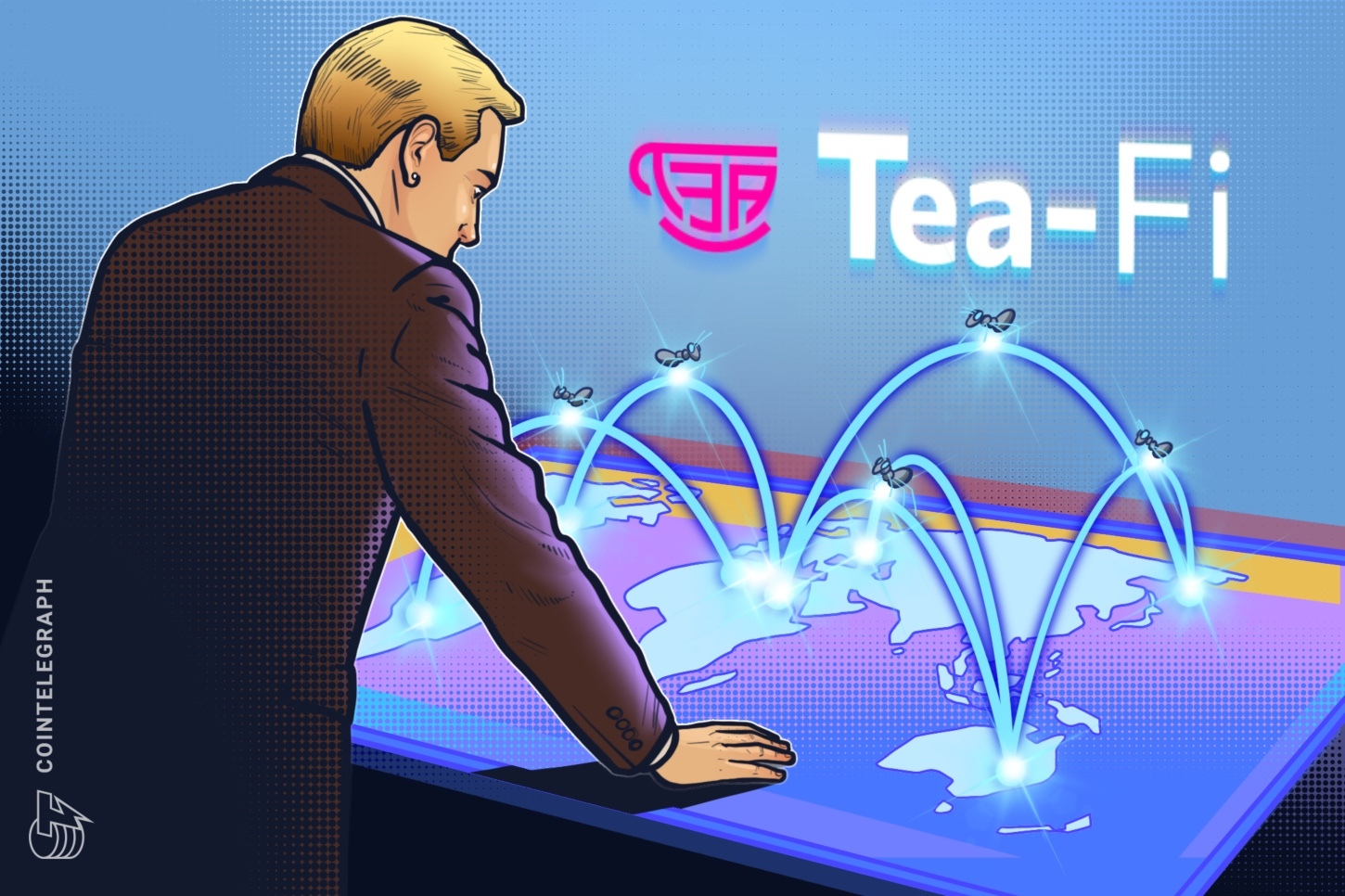Sponsored Content
What are gas fees, and why are they a problem for DeFi adoption?
Any time you interact with a blockchain, you pay a gas fee — a small charge that goes to the validators running the network. Gas fees are meant to reward validators for processing and securing transactions, but to users, they often feel like unavoidable tolls.
Attempting to send a transaction without holding enough of the network’s native token will result in an outright failure. Even when it does go through, the fee itself can swing depending on how busy the chain is.
For newcomers, the experience can feel punishing. A simple $5 swap might come with $12 in fees, only to fail because the gas balance wasn’t topped up beforehand. The result is often the same: a frustrating experience that feels like a reason to walk away.
Decentralized finance (DeFi) was meant to democratize money management for anyone with internet access. In reality, fees put that promise out of reach. Everyday finance apps bury the cost of transactions in the background. However, with DeFi, the fees sit right on the surface. Each transaction comes with a visible price tag, and when that price climbs, it becomes a clear obstacle to mainstream use.
How do blockchains and wallets handle gas fees?
Every blockchain requires gas, but each one sets its own rules for transaction fees. For example, Ethereum requires gas fees to be paid in ETH, BNB Chain in BNB and Polygon in MATIC. This design, intended to secure the network by rewarding validators, requires users to hold a native coin balance even to perform basic transactions. Someone holding USDC on Ethereum, for example, can’t move it until they also acquire ETH to pay gas.
The situation becomes more complicated when users move between chains. People end up swapping tokens they never intended to hold or maintaining multiple balances just to keep transactions flowing. What should feel like a simple payment often turns into a mini logistics exercise.
Crypto wallet providers and platforms have tried to reduce this friction in different ways. Some models allow users to pre-fund a “gas balance,” others attempt to automate payments in the background, and a few try to mask the cost entirely. While these approaches make transactions smoother in some instances, none deliver a model that works across chains, supports any token and preserves complete user control.
The current model is a set of stopgaps, not a system that works everywhere. This is why the drive for smoother, gas-free transactions is shaping much of the experimentation in DeFi.
Solving the gas problem without going centralized
Most existing alternatives still leave users juggling chains, with no universal way to eliminate gas fees. Rather than introducing another tool for chasing token rewards, Tea-Fi is building the basic infrastructure that makes daily DeFi transactions feel simpler.
In practice, this means helping people carry out routine actions, such as swapping tokens or using decentralized applications (DApps), without constantly worrying about whether they have sufficient gas in their wallet. By abstracting away gas at the protocol level, Tea-Fi aims to make these transactions feel as seamless as using a mobile payment app.
The project has been built with interoperability in mind. It already connects with Katana, a DeFi-focused layer-2 blockchain, as well as with larger ecosystems like Ethereum and Polygon. Recent data shows that Tea-Fi has already attracted one-third of Katana’s total users. Instead of patching problems one by one, Tea-Fi builds simplicity into the system itself.
By tackling gas fees at the system level, Tea-Fi reshapes how people interact with DeFi on a day-to-day basis, reducing failures and enabling smoother cross-network participation.
How Easy Gas changes the approach to gas fees
Easy Gas using No Gas (NOGA) — the first protocol aligned app (PAA) on Tea-Fi — is Tea-Fi’s answer to the gas problem. It moves the burden off the user. Instead of forcing people to always hold the correct token, it relies on a network of relayers that quietly handle the fee behind the scenes.
Users no longer find themselves stuck mid-action because their address is short on gas, and the system preserves the non-custodial structure of DeFi while improving user experience. In other words, people don’t have to hand over control of their assets just to make things simpler.
Good news!!!
— Tea-Fi | Gasless swaps ☕️ (@TeaFi_Official) June 6, 2025
We are happy to announce that Easy Gas now supports over 200 tokens. pic.twitter.com/PvNc6qBkuU
For users, this puts an end to the frustration of being unable to transact due to insufficient token balances. For developers, the benefits look different. Easy Gas is built to run on any protocol, so users don’t have to rely on patchy fixes from one platform to the next. Swapping tokens, staking or moving assets between chains all trigger the same process: gas is handled quietly in the background.
Easy Gas doesn’t bolt on another patch tied to a single wallet or ecosystem — it acts as a universal layer that any project can plug into. That provides users with a smoother experience while saving developers from having to repeatedly rebuild the same fixes.
Can the Easy Gas model fix DeFi’s gas fee problem?
Under the hood, Easy Gas uses Ethereum standards and Tea-Fi’s infrastructure to make apps smarter. With ERC-2771 (meta-transactions), users can make gasless transactions, allowing the system to process fees behind the scenes. Meanwhile, ERC-4337 (account abstraction) makes wallets safer, smarter and more convenient. Tea-Fi adds bundlers, paymasters and proxy architecture for efficiency under real-world conditions.
The best way to understand what Easy Gas does is to examine how it’s used. TeaFi’s SuperSwap is a good example. It integrates trading, bridging and routing into a single flow, with the help of Li.Fi — a protocol that aggregates bridges and decentralized exchanges (DEXs). Users can seamlessly swap across chains, and developers have a simpler toolkit for adding multichain features to their apps.
Want to save on gas fees when swapping or staking?
— Tea-Fi | Gasless swaps ☕️ (@TeaFi_Official) July 25, 2025
Learn how to swap from Ethereum-based tokens to Katana’s in this short tutorial. pic.twitter.com/iaTJFcmwtf
Multi-Send is another example. It lets a user pay several addresses in one go. That may not sound dramatic, but for decentralized autonomous organizations (DAOs) or companies that manage payroll or community distributions, the cut in time and fees makes a big difference.
What’s next for gasless transactions in DeFi?
Easy Gas works on Ethereum, with all major EVMs to come in the near future. That’s already a diverse mix, and the plan is to bring it into even more apps. If the rollout goes as intended, paying for gas could soon feel less like an awkward extra step and more like a standard feature built into the system.
Tea-Fi is also linking Easy Gas to its smart wallet infrastructure, which will support mobile and social log-ins. This step is meaningful as it provides newcomers with a familiar entry point into DeFi. Instead of a complicated sign-up, it resembles the kind of smooth sign-in process people are already familiar with from everyday apps for payments or mobile banking, reducing the sense of stepping into unfamiliar territory.
Super Swap on Tea-Fi moves your tokens across 40+ chains in one click - no bridge drama, no hassle.
— Tea-Fi | Gasless swaps ☕️ (@TeaFi_Official) May 16, 2025
Try it now and tell us what you think 👇 pic.twitter.com/LEbZjaMaLM
For widespread adoption, especially in regions where crypto interest is growing rapidly but education and infrastructure remain hurdles, gasless transactions could be the detail that finally makes DeFi practical. For many beginners, nothing is more discouraging than a payment that won’t go through. Gasless transactions eliminate that pain point, leaving behind a process that feels natural for everyday use.
Disclaimer. Cointelegraph does not endorse any content or product on this page. While we aim at providing you with all important information that we could obtain in this sponsored article, readers should do their own research before taking any actions related to the company and carry full responsibility for their decisions, nor can this article be considered as investment advice.


